'How these curiosities would be quite forgot, did not such idle fellowes as I put them down.'
- John Aubrey
'Oh roads we used to tread,
Fra' Maryhill to Pollokshaws - fra' Govan to Parkhead!
- Kipling, 'McAndrew's Hymn'
'Photography can be a mirror and reflect life as it is, but I also think that perhaps it is possible to walk like Alice, through a looking-glass, observe the puzzles in one’s head and find another kind of world with the camera.' - Tony Ray-Jones
Welcome to my wee photoblog on Glasgow, where we feature the joys and unjoys of walking and cycling through a fascinating, beautiful and often badly run city. For the blog's origin and a list of all posts see the 'Introduction' post -
Feel free to drop me an email with suggestions, offers of £20 notes etc. The address is damnyouebay@gmail.com. I have had to start watermarking the pics as I have come across one big website using a pic without permission - I suppose there must be others.
If you are a private individual and want to use any of the pics for non-commercial purposes please get in touch and I will usually be happy to say 'Aye' for free - just give the Album a credit. If you want to use a pic for commercial purposes a small mutually agreed fee and a credit will suffice. And you can follow me on Twitter if you wish: Edwin Moore@GlasgowAlbum.
Today is Saturday 4 January, 2014 and we are off with our friend Alex to Stepps to follow the course of the Molendinar from Frankfield Loch to the Clyde at Glasgow green. Alex has prepared the maps, so it all his fault if we get lost.
From the wiki entry -
'The
Molendinar Burn is a stream in
Glasgow,
Scotland. It was the site of the settlement that grew to become the kernel of Glasgow, and where
St Mungo founded his church in the 6th century. It was later used to power the growing town's mills. Indeed the word "molendinar"is defined as "relating to a mill or a person who works in or lives in a mill".
Its source is Frankfield Loch in
Cardowan to the north-east of Glasgow; then it flows through
Hogganfield Loch and into the
Clyde. It was covered over in the 1870s (by what is now Wishart Street). The point where it flowed into the Clyde caused silting, which allowed a ford to be made at the Saltmarket. This was later dredged and bridges were constructed.
 |
| Bird approaching |
 |
See
From the above -
•
'This is Glasgow's most important site for migrant and wintering waterbirds, it is also recognised as a key regional site for wildfowl.
• A diverse range of birds is attracted to the loch, with over 100 different species being recorded at the site .
• Many of the birds have become used to the presence of people, and species such as Tufted Duck, Goldeneye and Goosander can be seen at close quarters.
• Occasionally rarer birds such as Slavonian Grebe can be seen and the Smew is a regular winter visitor.
• The woodlands, marsh (including areas of open water) and grassland are managed for nature conservation and support populations of Skylark and Water Vole.'
|
 |
| A few joggers and dog walkers and families about |
 |
Roots clutching like a pair of arms.
“What are the roots that clutch, what branches grow
Out of this stony rubbish? Son of man,
You cannot say, or guess, for you know only
A heap of broken images, where the sun beats,
And the dead tree gives no shelter, the cricket no relief,
And the dry stone no sound of water. Only
There is shadow under this red rock,
(Come in under the shadow of this red rock),
And I will show you something different from either
Your shadow at morning striding behind you
Or your shadow at evening rising to meet you;
I will show you fear in a handful of dust. ”
- Eliot
|
 |
| Old English Sheepdog |
 |
| Accidental pic |
 |
| Angling Zone |
 |
| Swan on patrol |
 |
| Stops to say hello to Alex |
 |
| Cafe Express |
 |
| Oh dear |
 |
| No contact with the water |
 |
Lethamhill Golf Course Pavilion. See
Course Description
'Lethamhill Golf Course, located three miles north east of Glasgow city centre, is one of Glasgow's popular municipal courses. This 18 hole mature parkland course, with many tree-lined holes, is situated right next to the beautiful Hogganfield Loch. The existing pavilion offers golf starter accommodation, office space, toilets, lockers, changing accommodation and vending. There is also a mobile snack bar on site.'
|
 |
| Golf Course rules. Why can't you share clubs? |
 |
| Random Security Spot Checks |
 |
| In we go |
 |
| Here we go |
 |
| And so we leave Riddrie Park Cemetery |
 |
| In Greenside St |
 |
| Cat wants in |
 |
| Greenside Crescent |
 |
| Onto Langdale St |
 |
Now coming up to Provanmill Rd and the Provanmill Inn. Now a burned-out ruin, the Inn was once a respectable pub with an old history -
But in modern times it became part of Glasgow's gangster history -
|
 |
| The back; one of Alex's pics |
 |
| Glenmill Medical Centre |
 |
The author taking a pic of the Ranza Bar and its joined-at-the-hip betting shop. There have been some incidents outside this bar also -
'Police in Glasgow have launched an investigation after a 29-year-old man was hit by a car and another man was shot - in what newspaper reports are calling a "double gangland murder bid".
A man was believed to have been hit by a vehicle outside the Ranza Bar on Royston Road, near Provanmill Road in the east end of the city, at about 3pm on Saturday.
About two hours later, police said that a 24-year-old man arrived at a hospital with a gunshot wound.
Strathclyde Police said are not yet confirming that the two incidents were linked, but newspaper reports from the scene say the injuries were caused in the same attack.
A forensic investigation is continuing at the site of the incident in Royston Road.
Police would only confirm that both men are being treated in hospital, and are appealing for witnesses to come forward.'
|
 |
Molendinar Community Centre. See
http://www.glasgowlife.org.uk/venue-hire/community-facilities/Molendinar-Community-Centre/Pages/default.aspx |
 |
| Do not hang or climb |
 |
| Red Road flats in distance |
 |
| Something War of the Worlds about these lights |
 |
| The burn is down below |
 |
| Let's go up the steps |
 |
| The Community Centre again |
 |
| A Scots Pine I think? - our national tree |
 |
| A drowned bike |
 |
| A memorial |
 |
| Back on Royston Rd; we bid farewell to the Ranza. Not quite the Prancing Pony perhaps, but then we are a long way from the Shire, Bilbo |
 |
| Ah - we have passed under that bridge many times |
 |
| Soapy Bubbles |
 |
The Red Road flats - less in number when we were last there. See
Red Road Flats
Red Road Flats 2
Red Road Flats 3
Red Road Flats 4: Doors Open Day
|
 |
| Pressing on |
 |
| Looking back |
 |
| Old railway ground we suppose |
 |
| Passing Rona St |
 |
| Passing an apple tree |
 |
| Out of focus - but left in as pic of entrance to Glenconner Park |
 |
| We are comig off Royston Rd now. . . |
 |
| . . .turning down Cloverbank St |
 |
Cloverbank Gardens. For more on the area see
|
 |
| Along here we go |
 |
| Looking back |
 |
| We are about Junction 14 of the M8 |
 |
| Dead end |
 |
| Down here we go |
 |
| Coming on to Viewpark avenue; M8 above |
 |
| Weathered plaque opposite. . . |
 |
| . . .marks the underground course of the Molendinar |
 |
| As Alex observes, a pretty useless fence |
 |
| Now going down Firpark St |
 |
| Cathedral and Royal on right |
 |
You used to be able to see the Molendinar here on the left when it was an open sewer. My brother;s flat was in the Drygate to our left. . .
|
 |
| Looking down beside the Great Eastern we can see the Molendinar again |
 |
| Heading round the back,. . . |
 |
| Now back on Duke St looking up the Dyrgate, to which we shall return in next post |
 |
For more on Duke St see
Celtic Park to Parkhead Cross and up Duke St
|
 |
| Now walking to High St |
 |
| Now in the High St, heading for Glasgow Green |
 |
| My right retina began to detach at this point - few days later I was being operated on at Gartnavel hospital by the brilliant eye team. Now re-attached, thanks Gartnavel |
 |
Now at Glasgow Green. See
Glasgow Green: the 2010 Scottish Junior Run
http://glasgowalbum.blogspot.com/2010/09/glasgow-green-2010-scottish-junior-run.html
|
 |
For more on the Clyde bridges, see
Welcome to Glasgow 3: Charing Cross station to Dalmarnock station
|
 |
| Water is high |
 |
| Barrier has risen |
 |
| The output is up on our right, hidden by high Clyde |
 |
| Walking to St Enochs Underground, we pass the Clutha |
 |
See
RIP Clutha Victims
|
Thank you for browsing, dear visitor.
My other wee blogs are
Reviews of Scotland: 1000 Things You Need to Know
RADIO AND TELEVISION
'I love it - I'm giving this copy to a friend and buying another for myself' - Darren Adam, Presenter, Radio Forth, 17 November 2008
‘It’s a great wee book’ – Stephen Jardine, introducing Edwin Moore on Scottish Television’s Five-Thirty Show
'A fantastic book' - Scott Wilson , talk 107 Breakfast Show host
'A great read' - Dougie Jackson, Drivetime host, Smooth Radio 105.2
THE PRESS
'Despite its apparently humorous format, this is a serious and extensive dictionary on all things Scottish; from Jean Redpath to Lorne sausage, from Flodden to the Corries. Is particularly good on history and minutiae. There's a useful chapter on famous Scottish legal cases and another on literature. Excellent' - Royal Scottish Legion, Feb 2009
'This is the ultimate Scottish reference book' - Waterstones Christmas catalogue, 2008
'This is a fascinating look at the history of Scotland: its languages, politics and great achievements, from its origins in the ancient landmass of Laurentia 400 million years ago, to devolution and Billy Connolly. Edwin Moore has collected a thousand important facts about this beautiful country, covering Scottish history and culture, correcting misconceptions, and examining the mysteries of haggis and bagpipes with insight, warmth and impressive attention to detail' - The Good Book Guide, November 2008
'This is a recipe for revealing how horribly ill informed you are about your country. Although, if you are skillful, you can nod sagely as you read some new fact and mutter 'Ah, yes!' as if recalling the information from your excellent schooling. Where else will you find a real recipe for making haggis from scratch side by side with a potted biography of David Hume; a section of the Declaration of Arbroath and the curiously touching fact that Lulu was only 15 when she had a hit with 'Shout'? The whole thing is of course, silly - but oh so addictive.' - Matthew Perren, i-on Glasgow, December 2008
'. . . well crafted and witty' - Bill Howatson, Aberdeen Press and Journal, 18 October 2008
‘While most of Edwin’s entries are entertaining and scholarly – he writes like a Scottish Bill Bryson – it is when he takes an interest in the backwaters of history, the details lost down the back of the sofa, that he is at his best’ – Jack McKeown, The Courier, 27 October 2008
'History, it is said, is written by the victors. Trivia, meanwhile, is written by the guys with the smeared spectacles and the breathable rainwear. The first discipline is linear and causal; to quote from Alan Bennett’s play The History Boys, history is “just one f****** thing after another”. Things look different, though, when viewed through the prism of trivia. The past is reduced to one big coleslaw of fascinating facts that in their randomness tell a more mixed-up tale entirely.
The first approach leads to big, frowning books by the likes of Tom Devine and Michael Fry. The latter results in small, cheerful books such as Scotland: 1,000 Things You Need to Know, Edwin Moore’s valiant attempt to navigate the more trivial contours of enlightenment and clearances, crown and parliament, dirt and deity.
Moore proceeds from a sincere and controversial first principle: Scotland is really a rather pleasant and interesting place. . .As a work of popular scholarship, though, it’s in a different league to the Scottish novelty titles that get stocked next to the bookstore tills as potential impulse purchases, those little handbooks of parliamo Caledonia and regional braggadocio, such as Weegies vs Edinbuggers.' - Allan Brown The Sunday Times, 21 September 2008
'In his book, Scotland: 1000 Things You Need to Know, Edwin celebrates all that sets us Scots as a race apart - our language, law, flora, food, and of course, our people. From our poets, architects and inventors, to our artists, entertainers and fighters. But he doesn't shy away from the more unpleasant aspects of our history. . .' - Robert Wight, Sunday Post, 14 September 2008
‘We think we know all about William Wallace, Robert the Bruce and the Union of the Crowms. However, according to Edwin Moore, author of , Scotland: 1000 Things You Need to Know, we’re still in the dark about many aspects of our history and culture. . . The Big Issue looks at 20 of the most astonishing examples of secret Scotland.’ – The Big Issue, 18-24 September 2008
'What's the connection between Homer Simpson and Larbert, and why are generations of lawyers grateful to a Paisley snail? Need to know more? Author Edwin Moore has gathered 1000 facts like these about Scotland in a quirky new book. Brian Swanson selects a few favourites. . .' - Scottish Daily Express, 13 September 2008
'The palm for Christmas-stocking books seems to have passed recently to popular science, with best selling titles every year such as Why Don’t Penguins’ Feet Freeze? This year there has been a gallant attempt at a historical fight back. Scotland: 1,000 Things You Need to Know(Atlantic Books, £12.99) asks (and answers) such post-turkey questions as ‘How many kings of Scotland died in their beds?’, ‘Who on earth decided that the Declaration of Arbroath was the cornerstone of modern democracy?’ or ‘Why is iron brew spelled Irn-Bru?’ Mark Mazower,History Today; The Best of History in 2008, December 2008
'A real treat for the serendipitous Scotophile' - Reginald Hill
FROM THE INTERWEB
www.Booksfromscotland.com (on the new paperback edition)
Book of the Month, May 2010
'Whether it's Scottish lochs or Enlightenment philosophers, the facts of the devolution referendums or the mysteries of Irn-Bru, myths will be debunked and truths revealed in this light-hearted but rigorous overview of Scottish history and culture.'
Also available for download on Amazon's e-book store is my 100 Brief Encounters
Here are some reviews of the print edition (published by Chambers in 2007) -
Edwin Moore's quirky collection of a hundred encounters between (mostly) important historical figures is a gem of a book. Where else could you get concise enlightening accounts of Henry VIII wrestling with Francis I, Geronimo surrendering to General Miles, Ernest Hemingway presenting Fidle Castro with a fishing trophy or (as seen on the books cover) a baby faced Bill Clinton shaking hands with John F Kennedy. A marvelous 'little window on human history. ' - Dominic Kennerk, Waterstone's Product Planning and Promotions Co-ordinator (From the Waterstone's 'We Recommend' list for 2008)
Witty, light and packed with information -- The Sunday Herald
In 1936, in the wake of winning a clutch of gold medals at the Berlin Olympics, the great athlete Jesse Owens was snubbed by an imperious leader, on racial grounds. Popular belief would have it that the leader was Hitler, who is said to have stormed off, furious to see a black man beating European athletes. In fact the man in question was President Roosevelt, who worried that paying attention to Owens' triumphs might be a vote loser. Although Owens and the German Chancellor never talked, Owens claimed that Hitler greeted him with an enthusiastic wave. Such near-misses, shakings of hands and ships-in-the-night meetings are the subject of Brief Encounters – Meetings between mostly remarkable people, a likeable new book by Edwin Moore (Chambers £7.99). Flicking through the index, you will find some expected encounters (Dante stares at Beatrice, Corday stabs Marat, The Beatles strum along to a Charlie Rich record round at Elvis's house), and the book's intriguing and memorable cover shows a baby-faced Bill Clinton manfully gripping the hand of JFK. But Moore has navigated past some of the more obvious collisions, collusions and confrontations of history (there is no Dr Livingstone, I presume) and much of the book's pleasure derives from lesser known incidents.
Inevitably, some of the accounts of earlier meetings are somewhat sketchy but Moore offers some piquant speculation, laced with humour (the book is tagged Reference / Humour, rather than History and this feels right, but the book, though wry and opinionated, never stoops to wackiness). I was intrigued to discover that, though Attila the Hun did die on his wedding night, it was not in drunken and lecherous debauchery, as his enemies maintained, but supposedly because he was generally a simple and clean-living man who had a few too many which brought on a particularly bad nosebleed.
Moore's book is full of such tales – it would be wrong of me to steal the tastiest morsels of his research and pepper this article with them, but look out for a subsidiary reason for the Gunpowder Plot (too many dour and powerful Scots in Parliament); a great meeting of great beards, as Castro wins the Hemingway prize for sea-fishing; Dali bringing a skeptical Freud round to the art of the surrealists; Buffalo Bill's wife claiming an aged Queen Victoria had propositioned him; Oscar Wilde getting a kiss from Walt Whitman, while Walter Scott was more taken with Burns's charismatic eyes. This is an enjoyable and vigorous rattle through some fascinating and believable yarns. My only quibble is that it's a little on the short side – let's have Volume 2 please Chambers! - Roddy Lumsden, www.Books from Scotland.com



















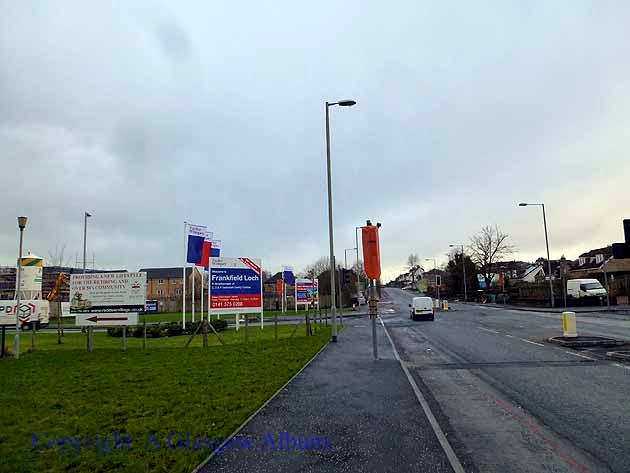








































































































































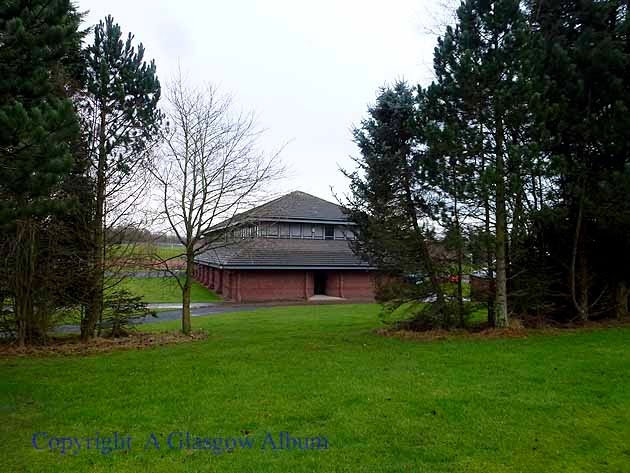





















































































































































































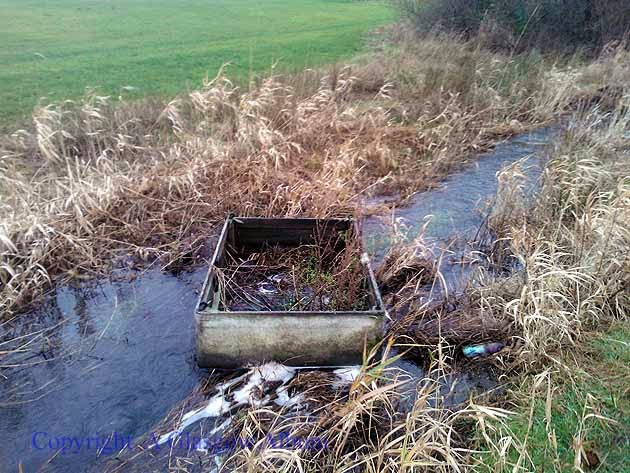



















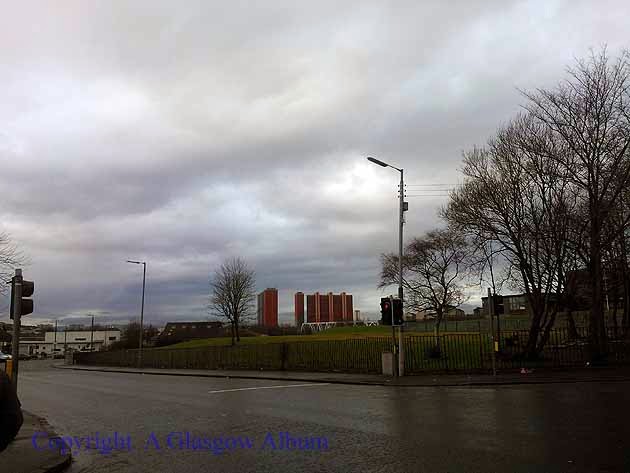














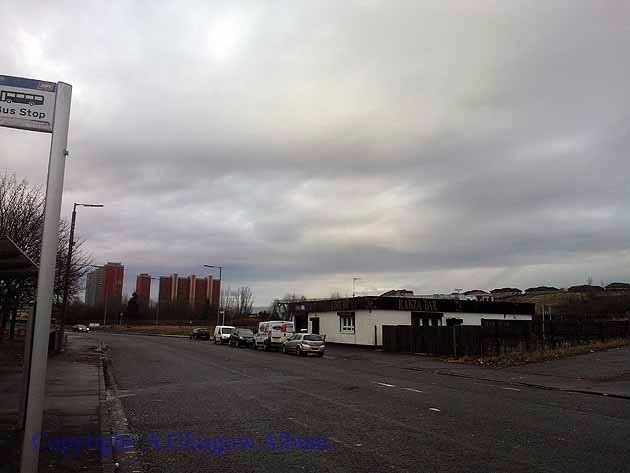




















































































































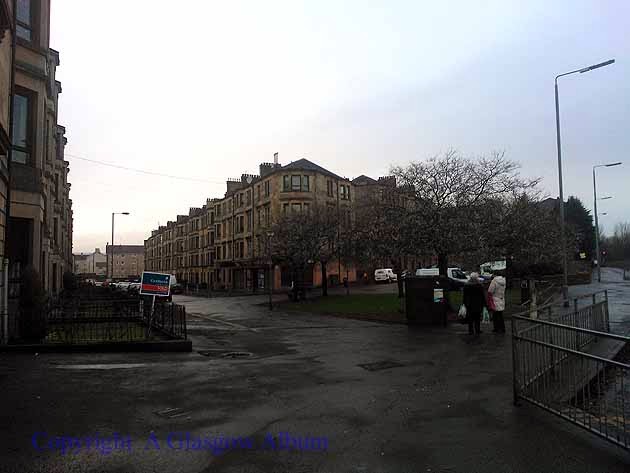











































No comments:
Post a Comment